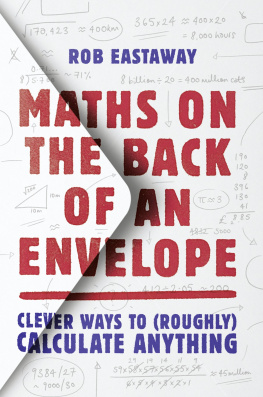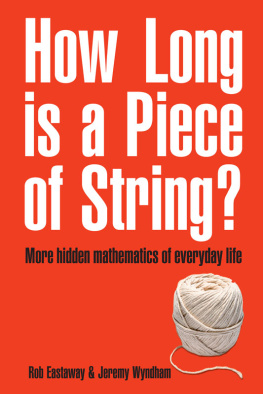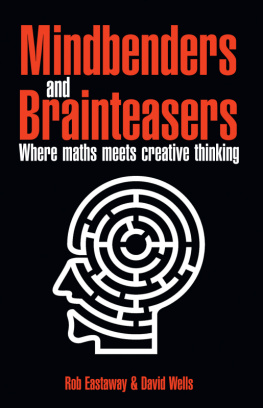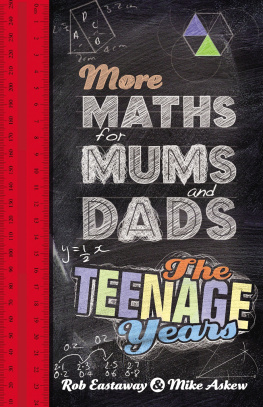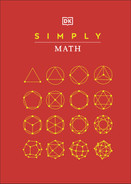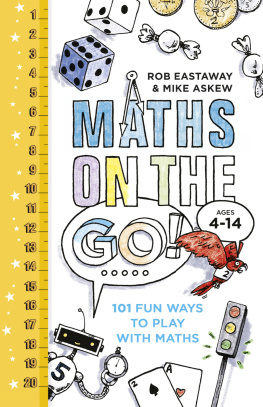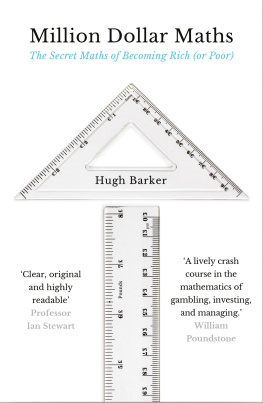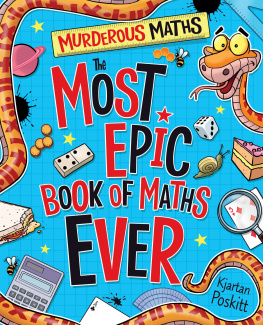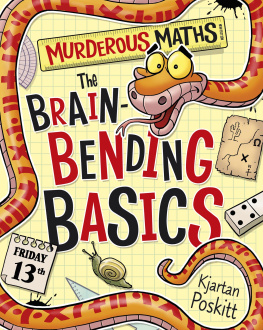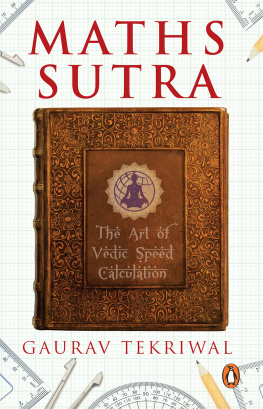

HarperCollinsPublishers
1 London Bridge Street
London SE1 9GF
www.harpercollins.co.uk
First published by HarperCollinsPublishers 2019
FIRST EDITION
Rob Eastaway 2019
Cover design by Andrew Davis HarperCollinsPublishers Ltd 2019
Cover photograph Shutterstock.com
A catalogue record of this book is available from the British Library
Rob Eastaway asserts the moral right to be identified as the author of this work
All rights reserved under International and Pan-American Copyright Conventions. By payment of the required fees, you have been granted the nonexclusive, non-transferable right to access and read the text of this e-book on screen. No part of this text may be reproduced, transmitted, downloaded, decompiled, reverse engineered, or stored in or introduced into any information storage retrieval system, in any form or by any means, whether electronic or mechanical, now known or hereinafter invented, without the express written permission of HarperCollins e-books.
Find out about HarperCollins and the environment at www.harpercollins.co.uk/green
Source ISBN: 9780008324582
Ebook Edition September 2019 ISBN: 9780008324599
Version 2019-09-25
CONTENTS
A few years ago, at a school event, I asked the audience of teenagers to submit some estimation questions that I would then attempt to answer live on stage. One pupil posed this simple question: How many cats are there in the world?
Cats are always a popular topic, so I took it on.
My thinking went like this:
Lets assume that most cats are domestic.
Some people have more than one cat, but usually a household has only one cat, if any at all.
In the UK, and thinking of my own street as an example, it seems reasonable to suppose that there might be one cat in every five households.
And, if a household contains on average two people, that means there is one cat for every 10 people.
So, with 70 million people in the UK, lets say that there are, perhaps, seven million cats in the UK.
So far, so good. But what about the number of cats in the rest of the world? It seems unlikely that cats are as popular in countries like India or China as they are in the UK (although what would I know? Remember, this is purely guesswork on my part), therefore, Id expect the ratio across the world to be smaller than it is in the UK maybe one cat for every 20 people?
So, with eight billion people in the world, that suggests there are maybe:
8 billion 20 = 400 million cats.
It doesnt seem an outrageous number.
That was the figure I suggested, anyway.
A member of the audience put his hand up.
The real number is 600 million, he said.
Really how do you know?
I just looked it up online.
So thats it: no need to come up with an answer; its already been done.
If its really that simple, we can forget about doing estimations altogether. With just a few clicks on Google you will probably find a statistic to answer every question you could possibly think of.
Except for one crucial thing.
Where did the person who published that figure of 600 million online get their number from? No one, Im quite sure, has gone around the world doing a census of cats. The figure of 600 million is an estimate. It might be an estimate that is based on a slightly more scientific method than mine, using rigorous surveys and cross-checks, but its just as likely that the figure cited online came from somebody who did a back-of-envelope calculation like the one I just described. Or, perhaps they simply invented a figure that suited their agenda. Theres no reason to believe that their number is more reliable than mine indeed, it might be less reliable.
Once a statistic like this is out there, published in a newspaper, quoted on a website, it becomes fact, and it can be re-quoted so often that the source may go unquestioned and very quickly be forgotten altogether.
Its an important reminder that the majority of statistics published anywhere are estimates, many of them worked out on the equivalent of the back of an envelope. When back-of-envelope calculations produce a very different answer from the one thats been put forward, it doesnt necessarily mean that the estimate is wrong. It means rather that the published figure deserves more scrutiny.
We tend to think of maths as being an exact discipline, where answers are right or wrong. And its true that there is a huge part of maths that is about exactness.
But in everyday life, numerical answers are sometimes just the start of the debate. If we are trained to believe that every numerical question has a definitive, right answer then we miss the fact that numbers in the real world are a lot fuzzier than pure maths might suggest.
Ive realised in writing this book that there is a kind of paradox. On the one hand, I want to argue that approximate numbers can often be more informative, and more trustworthy, than precise numbers. Yet at the same time, in order to be able to produce those approximate answers, its essential to know how to do some calculations exactly. Your basic times tables, for example. Concrete, exact maths is the foundation for the woolly numbers that we have to deal with in everyday life.
Ive divided the book into four sections.
In the first section, I explore how precise numbers can be misleading, and why its good not to be entirely dependent on a calculator.
The second section includes the arithmetical techniques and the other knowledge that is an essential foundation if you want to embark on back-of-envelope calculations. This includes a refresher on how to do arithmetic that you may not have needed to practise since you left primary school, as well as short cuts that you probably never encountered there.
The rest of the book shows how to use these techniques to tackle problems, from everyday conversions, to more serious issues like helping the environment. And at the end, there is a collection of so-called Fermi questions: quirky and esoteric challenges to come up with a reasonable answer based on very little hard data.
Back-of-envelope maths is an important and valuable life skill. But thats not its only benefit. Many of us also indulge in it simply because its a fun and stimulating exercise that keeps the brain sharp.
ENVELOPES VERSUS CALCULATORS
I dont know when the backs of envelopes first became a popular place for jotting rough-and-ready calculations. Was it before or after people started to use the back of a fag packet, or in the USA, the back of a napkin?
Regardless of where the expression was first coined, the back of an envelope has come to symbolise any sort of rough-and-ready type of calculation that gives an indication of what the right answer will be.
It is the tool that people in business use for quickly checking the viability of a new project. Engineers use it to check if a proposed solution is likely to work. And commentators on statistics use it to help make sense of the myriad numbers that are thrown out by politicians, expert pundits and marketers.
On a more mundane level, its the maths you might use every day to ensure you arent getting ripped off by a so-called deal that turns out to be anything but.
It is also maths and arithmetic that can be done without needing to resort to a calculator.
Next page
